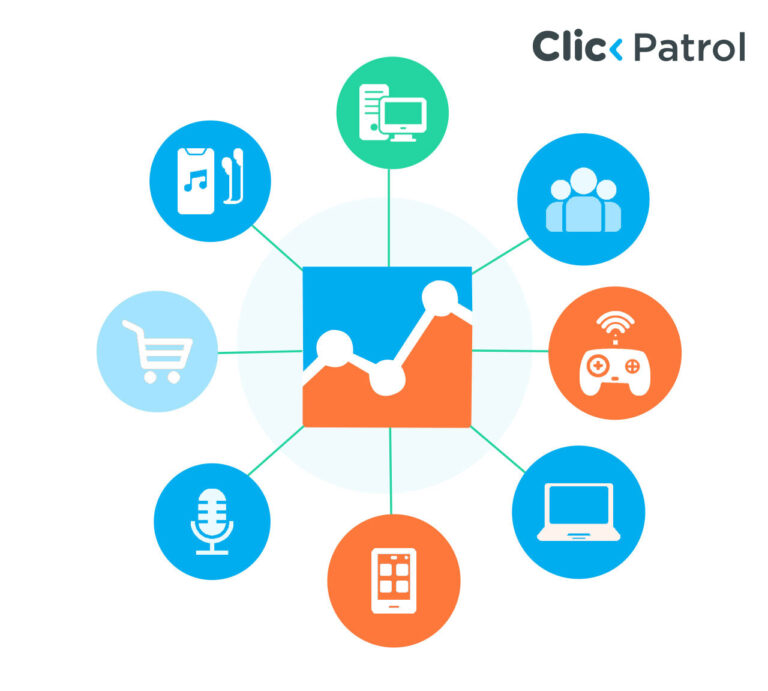
Fake Clicks: How to Protect Your Digital Campaigns
Abisola Tanzako | Oct 11, 2024

Table of Contents
- How fake Ad clicks work
- Types of fake ad clicks
- Impact of fake clicks on businesses
- How to protect digital advertising campaigns from fake ad clicks
- 1. Utilize fake click detection software
- 2. IP exclusion
- 3. Click pattern analysis
- 4. Set up conversion tracking
- 5. Target specific geographies
- 6. Limit daily ad spend
- 7. Regular monitoring of campaign performance
- Safeguarding your ads from fake click
- FAQs
Over the years, digital advertising has increased, and the increasing threat of fake clicks accompanies this growth. Fake ad clicks generally involve illegitimate clicks on web advertisements. This usually happens through competitors, mischievous people, or automated bots with the intent of wasting the advertising budget, degrading the ad quality, or earning revenue for the publishers through fake clicks.
Fake clicks are so rampant that fake ad losses are projected to balloon from 88 billion to 172 billion U.S. dollars from 2023 to 2028. Fake clicks cause huge losses for businesses, making them one of the biggest concerns of every business.
Therefore, companies must deeply understand fake clicks and their impact on their campaigns. This article will discuss fake ad clicks and ways of mitigating their effects on ad campaigns.
How fake Ad clicks work
The mechanics of fake ad clicks can differ, depending on the method used, but the basic principle is always the same: a user or bot generates fake clicks on an ad, and the advertiser gets charged. Here is a deeper look at how ad click fraud is perpetrated:
- Manual fake click: This is performed by human beings clicking the advertisements, mainly inside a click farm. The staff in a click farm clicks thousands of ads to give impressions of user activity. However, it is more difficult for this kind of fraud to be recognized since it resembles real human activity.
- Bot fake click: Several automated software programs, known as bots, create a massive number of clicks on the ads. Large botnets, an infected network of computers under the control of a central server, are always used to commit this fraud. The bots can click on ads thousands of times, exhausting the ad budget quickly.
- Competitor fake click: In several competitive industries, some unscrupulous competitors click on a rival’s ads to exhaust their ad budgets, reducing visibility. This kind of fraud is most destructive in sectors with high cost-per-click rates because one fraudulent click alone may make the advertiser pay substantially.
- Click injection: Fraudsters manipulate mobile in-app ads by injecting fake clicks using malware or malicious code to trigger ad clicks where no user has interacted. In other words, it is one-way mobile ad fraud is done, especially in app install campaigns.
Types of fake ad clicks
Fake ad clicks can be categorized in various ways, depending on who does it and their motives.
- Competitive fake click: Competitors consciously click on ads to use up the advertising budget. They increase, decrease, or eliminate the chances of ads reaching genuine customers and gain a competitive marketplace advantage.
- Publisher fake click: This is a form of ad fake click perpetrated by a website owner or publisher on the ads carried on their sites to reap more PPC revenues. Because the publisher earns a commission from every click on these ads, some publishers artificially inflate their revenues by over-inflating the number of clicks from their websites.
- Botnet fraud: Botnets are one of the most sophisticated forms of fake clicks. They are networks of hijacked computers. Fraudsters use these botnets to launch large-scale ad fraud clicks by emulating human-like interactions with ads. The bots may operate on a huge scale, making detecting fraud hard for advertisers.
- Ad network fraud involves fraudsters infiltrating the ad network itself. It consists of embedding malicious scripts in the ad-serving platforms, which can easily create impressions and clicks across many advertiser accounts without direct human involvement.
- Affiliate fraud: Affiliates click ads from affiliate offers and may have objectives to earn commissions on sales or leads fraudulently. They can use bots or other fake accounts to click through ads, inflate click-through rates, or claim affiliate commissions not earned.
Impact of fake clicks on businesses
Fake clicks have far-reaching implications for businesses that invest heavily in PPC (pay-per-click) campaigns. Some of the most important influences of this are:
- Wasted ad spend: This is the most immediate and noticeable effect of fake ad clicks. The money spent on those clicks is lost because these fake clicks represent no real user interest.
- Distorted campaign metrics: Fake clicks distort key metrics, such as CTRs, conversion rates, and cost per click. As a result, advertisers need help to assess campaign performance, as fake clicks inflate these metric figures.
- Lowered ROI: Fake clicks reduce the campaign’s overall return on investment by siphoning off a considerable part of the ad budget. Advertisers cannot justify continuous investment in ads where the costs will outweigh the benefits due to fraudulent activities.
- Lost opportunities: Fake clicks burn the ad budget in fractions of a second, preventing potential users from viewing and clicking on the ads. In other words, businesses will miss potential leads, customers, and sales opportunities.
- Inaccurate targeting: Fake clicks knock off the targeted data, keeping every advertiser from effectively reaching the targeted audience. These fraudulent clicks may cause the business to retarget ads toward the wrong users or save money on inefficient audience segments.
How to protect digital advertising campaigns from fake ad clicks
Due to losses businesses suffer due to fake clicks, it becomes essential for companies to seek ways to protect their ad campaigns from this menace. Here are some ways to preserve ad campaigns from fake ad clicks:
1. Utilize fake click detection software
Fake click detection software is one of the surest ways of fighting fake ad clicks. Equipped with advanced algorithms, machine learning, and active data analysis, such tools identify and block fake clicks. Features of fake click detection tools allow monitoring of user behavior and clicking patterns and blocking fraudulent IPs to ensure that the ads go to legitimate users.
One such software is ClickPatrol. It offers the best means of securing digital advertisements against fake clicks. It deploys highly developed machine learning algorithms and deep analytics to detect and block fake clicks. Its advanced protection system eliminates fake clicks and secures the ad budget.
2. IP exclusion
Other PPC systems, including Google Ads, allow their advertisers to exclude specific IP addresses from being allowed to see the ad. Suppose a suspicious click activity does arise from a single or multiple variety of IPs. In that case, it becomes easy for an advertiser to add them to his list of excluded IPs, preventing them from clicking on ads again.
3. Click pattern analysis
Watch out for any unusual click pattern. A sudden surge in click volume, mainly originating from one IP address or location, may indicate fraud. Recognize repetitive clicks from one user, a high click-to-conversion rate, and a low session time.
4. Set up conversion tracking
Businesses should set up conversion tracking to help them know if the clicks translate into any meaningful action, such as form submissions, purchases, or downloads. Conversion tracking ensures fraudulent clicks that do not deliver any post-click engagement are identified.
5. Target specific geographies
Fraud usually occurs in certain geographical areas. Geo-location targeting allows advertisers to aim for regions where the fraud would be low or will not happen. Similarly, they can exclude locations where fraud is highly active.
6. Limit daily ad spend
This saves businesses from huge losses because of ad click fraud, as the advertisers can set a daily limit on ad spend for their campaigns. Fraudsters, therefore, can only burn up part of the budget quickly, and the advertisers have enough time to track and act upon suspicious activities.
7. Regular monitoring of campaign performance
It is possible that frequent reviewing of campaign performance data may help advertisers spot warning signals for ad click fraud. So, be on the lookout for an unusual rise in click volume, inflated CTR (click-through rate), and a sudden drop in conversion rates these could signify early signs of fraud.
Safeguarding your ads from fake click
Safeguarding your ads from fake clicks is crucial in today’s digital advertising landscape. Fake ad clicks pose a significant and growing challenge for businesses, and if left unchecked, they can severely impact campaign performance. However, by utilizing the right tools and strategies, companies can protect themselves and ensure their ads reach genuine audiences.
Implementing measures like conversion tracking, click pattern monitoring, and regular performance reviews with fake click detection software can help advertisers shield their campaigns and maximize return on investment (ROI). As fraudsters continuously develop new tactics to evade detection, businesses need to stay proactive in safeguarding their assets.
FAQs
Q. 1 What is the significant effect of fake ad clicks on businesses?
Fake ad clicks drain advertising budgets primarily because they do not lead to actual customer engagement. They distort essential campaign metrics like click-through (CTR) and conversion rates, making it challenging for businesses to analyze and assess campaign performance effectively.
Q. 2 How effective is fake click protection software in safeguarding ad campaigns?
Fake click protection software can significantly enhance the security of ad campaigns by detecting and blocking fraudulent clicks. However, businesses must implement additional strategies to maintain the integrity of their campaigns and maximize their effectiveness.





